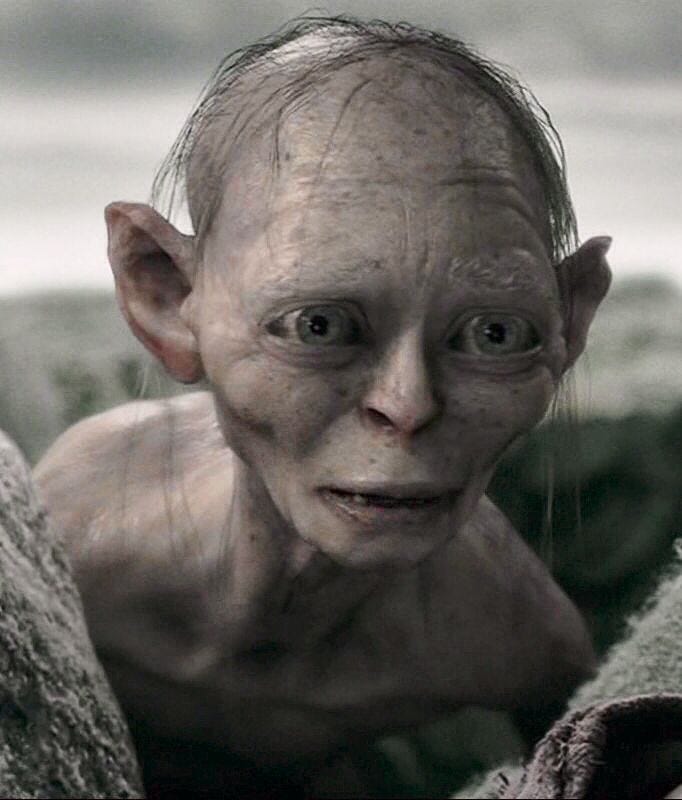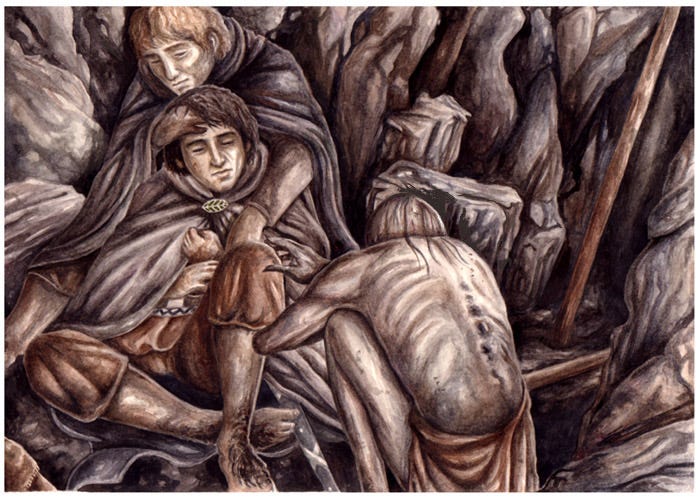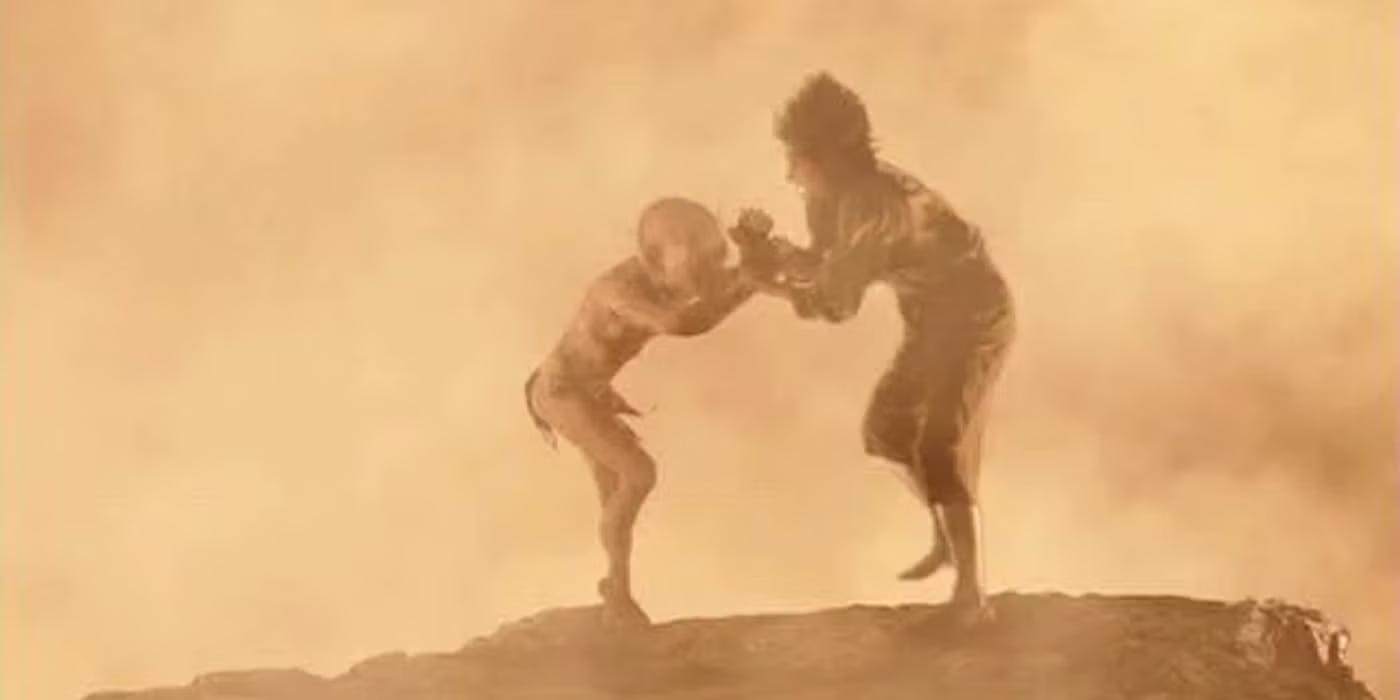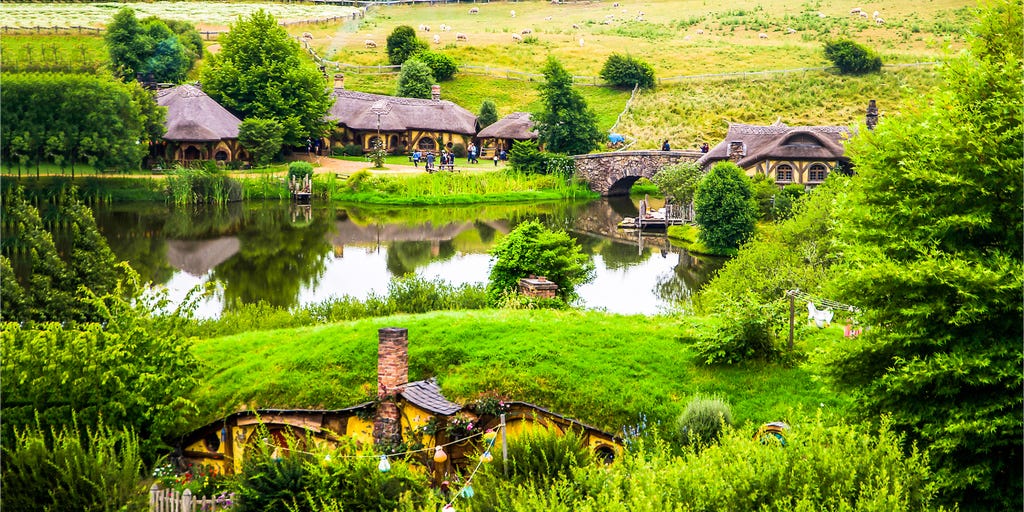*Disclaimer: if you haven’t read The Lord of the Rings, please do not read this post. Spoilers abound. However, if you have read the books (or seen the movies, I suppose) let’s wander together, shall we?
Last December I provided a writing prompt. The question: What if Gollum had survived? Imagine that The War of the Ring ended differently and the oldest hobbit in Middle-earth went with Frodo and Sam back to the Shire? What would his life be like now? What is his next story?
Well, I can’t resist. Here is my stab at it, and his survival and life in the Shire seem most plausible if Gollum changed his mind at some point, helping the hobbits, thus redeeming himself.
It would have happened while Sam and Frodo slept before the Stairs of Cirith Ungol.
Here, famously, Gollum came the closest to repentance. While luring them to Shelob and their deaths, Tolkien writes:
“Gollum looked at them. A strange expression passed over his lean hungry face. The gleam faded from his eyes, and they went dim and grey, old and tired. A spasm of pain seemed to twist him, and he turned away, peering back up towards the pass, shaking his head, as if engaged in some interior debate. Then he came back, and slowly putting out a trembling hand, very cautiously he touched Frodo’s knee—but almost the touch was a caress. For a fleeting moment, could one of the sleepers have seen him, they would have thought that they beheld an old weary hobbit, shrunken by the years that had carried him far beyond his time…” - p. 411, The Two TowersTo carry on with this new model, Gollum instead rouses them and confesses. He begs for their forgiveness and warns them of Shelob. After some difficult convincing, he is allowed to guide them once more—but now they avoid the giant spider, and they avoid the orcs stationed at the watch tower. Gollum—now Sméagol once again—reaccepting his name with growing joy, guides them through the Plateau of Gorgoroth and the three make it to Mount Doom days before Sam and Frodo make it in the canonical story.
Here, however, the power of the Ring would overtake Frodo and Sméagol. I imagine Frodo standing at the rocky edge, looking down at the lava just like what happened. Then the Ring overtakes him. Witnessing this, Sam would yell something to the tune of, “Throw it in, Mr. Frodo! Throw it in!” This would set Sméagol’s eyes alight, and a familiar wrestling match would ensue.
Two Ringbearers, fighting at the very precipice of the Cracks of Doom, resonates in a poetic way. I think if Sméagol had redeemed himself and Frodo had still failed in the end, Tolkien would have done something like have the Ring caught in the middle of their clasped hands.
And with their hands that were free? Punching and clawing, choking.
Next, we have to remember, that Sam in this version never bore the Ring. This means Frodo and Sméagol are the only two touched by its power. Based on the canonical story, a likely scenario to play out is Frodo and Sméagol go toppling over the edge. Sam dives forward and grabs them both by their wrists. He hoists them up, back onto the rocky ledge. Still trying to kill each other with their free hands, the Ring slips from Frodo and Sméagol’s collective grasp. As they punch and scratch, Sam now sees the One Ring. Untouched by its influence, Sam kicks the Ring over the edge; sending it down into the lava; thus destroying it and Sauron moments after.
Here, much of the canonical story reasserts itself. But right off, we run into a problem. The destruction of the Ring (and the activation of the volcano) would have happened days before the eagles flew in during the Battle of the Black Gate. Would the birds have been able to make it in time and swoop in to save Sam and Frodo, and now Sméagol too?
It is important to remember that the eagles, starting all the way back in The Hobbit, are Tolkien’s vehicle for “eucatastrophe:” a sudden and happy reversal of fortune: a term coined by Tolkien himself. There’s reason to believe then that, even if the Ring’s destruction occurred a few days earlier, the eagles would still come in and save the three.
After this, Gandalf would be made aware of Sméagol’s change of heart. When Sméagol could have led Frodo and Sam to their slaughter, instead Sméagol showed a remarkable reversal and guided the Ringbearer to the very end of his mission. And Gandalf would have understood well why Frodo and the once-Gollum had fought, the wizard would have praised Sam, and I am sure—based on how Frodo was treated after being stabbed by the Morgul blade—Gandalf would have informed Elrond. Elrond would have healed Sméagol, to the very best of his peerless ability. But much, evident by Frodo’s lingering suffering, would not be undone for Sméagol.
This brings us to the land of hobbits.
Sméagol would have helped fight against the ruffians occupying it during the Scouring of the Shire. Perhaps he would have fallen back on old skill; slinking and stalking, perhaps stealing men’s gear or even slicing a sleeping throat. If that last one happened, many hobbits would have been alarmed, beginning a certain unacceptance that would persist. And I think this quiet unfriendliness toward Sméagol would be there regardless. The real questions are; how severe is this avoidance and distrust, and what does he do to affect it for better or worse?
But, when all is done, we see that freeing of Lobelia Sackville-Baggins. She gave what was left of her money to Frodo, hoping it would go to help the hobbits who’d lost their homes.
Considering what Sméagol has done for Frodo in this “version,” and what Sméagol has done for the Shire, for all of Middle-earth for that matter, I think Frodo would put his once-guide into a nice home, and considering Stoors dwelled along the Anduin, and also the tale Bilbo told him about the lake under the Misty Mountains, I see Sméagol’s new home being just south of Bag End, along The Water; where Sméagol dumbfounds onlookers because, though he wears donated hobbit clothes now, he still wades out into the water and catches fish with his hands.
Sméagol soon marvels both children and historians alike; who find out he’s the oldest hobbit in all the world. Despite warnings from hobbit parents, questions about the Gladden Fields come at him, if he’d mingled with this distant ancestor or that, and of course questions about the original home of their kind—not as grandparents tell it, but how it really was; seen by eyes still blinking.
But there is sadness. Much sadness and the lonely nights pull Sméagol out into the twilight where he thinks again dark thoughts. For all his evils, in these next few years, he pays for them well. He has nothing, no one, and those he knew before clutching the One Ring; their deadness, their goneness, he slowly begins to fully feel. He and Frodo would end up having a complex relationship, too. In some ways, I see Frodo not wanting to be around Sméagol. He would be a reminder of moments and deeds that, at certain times, Frodo would not wish to think about. But Frodo would think about these, thus the two would commiserate on occasion, be support for the other when the thoughts turned blackest, the Morgul wound throbbed; like no other hobbits, save Bilbo perhaps, could ever understand.
Eventually, withered and old, so very old, Sméagol is given a place on the ship at the Gray Havens. Frodo looks back at his friends and smiles. But Sméagol, he lays down on the deck and curls up in a ball. He smiles too, but to himself, as a child would freshly rid of a bad dream. And aware of the grace given.










